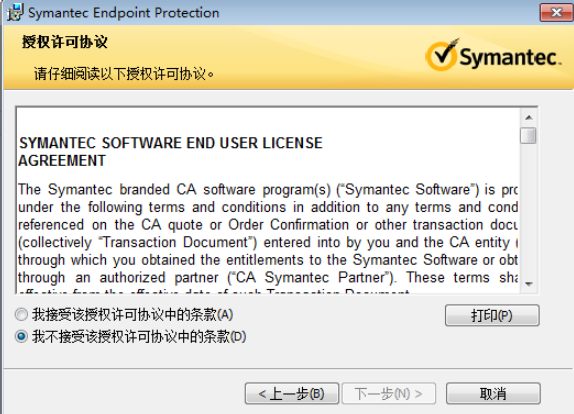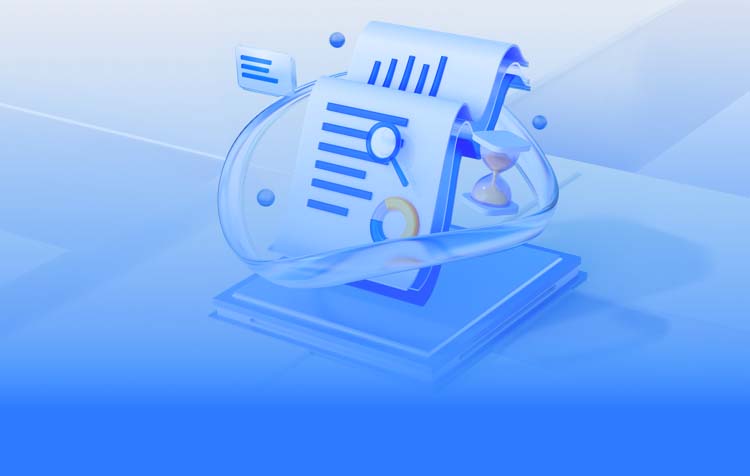symantec备份系统
软件: symantec
Symantec Backup Systems: Comprehensive Data Protection Solutions
1. Overview of Symantec Backup Systems
Symantec, a pioneer in enterprise data protection, offers two flagship backup solutions: Symantec Backup Exec (targeted at Windows-centric environments) and Symantec NetBackup (designed for large-scale, heterogeneous infrastructures). These tools address critical business needs such as data backup, disaster recovery, application protection, and regulatory compliance. Backup Exec focuses on simplicity and ease of use for small to medium businesses (SMBs), while NetBackup provides advanced scalability and automation for enterprise-level deployments.
2. Key Products & Core Features
a. Symantec Backup Exec
Backup Exec is a unified data protection platform optimized for Windows Server networks. Its core features include:
Unified Data Protection: Protects physical servers, virtual machines (VMs), and applications (Microsoft SQL Server, Exchange, SharePoint) through a single console.
Instant Recovery: Converts server backups into virtual machines (VMs) for minutes-level recovery in Hyper-V or VMware environments.
Intelligent Deduplication: Reduces storage requirements by up to 90% via client-side and hardware-based deduplication, optimizing network bandwidth.
Application-Aware Backups: Ensures consistent backups of SQL Server, Exchange, and SharePoint without requiring application downtime.
Cloud Integration: Supports hybrid backup architectures with Microsoft Azure, Google Cloud, and Amazon S3 for offsite data protection.
b. Symantec NetBackup
NetBackup is a scalable enterprise solution for complex, heterogeneous environments (Windows, UNIX, Linux, VMware, Hyper-V). Key capabilities include:
Cross-Platform Support: Protects data across diverse operating systems and hypervisors with a single management interface.
Advanced Deduplication: Offers block-level deduplication to minimize storage costs and improve backup efficiency.

Virtualization Optimization: Integrates with VMware vSphere and Microsoft Hyper-V for efficient VM backup and recovery.
Database & Application Protection: Provides specialized agents for Oracle, MySQL, PostgreSQL, and Microsoft Exchange to ensure transaction-consistent backups.
Disaster Recovery: Supports automated image replication across data centers and cloud platforms for business continuity.
3. Installation & Configuration Best Practices
a. Backup Exec 2023 Installation Prerequisites
Before installing Backup Exec 2023, ensure the following:
Master Server: Windows Server 2023 R2 X64 (minimum 4GB RAM, 25GB free disk space); avoid installing SQL Server on the same machine.
Clients: Windows 2023 SP1 or later (minimum 1GB RAM, 450MB free disk space); C: drive must have 4–5GB free for caching.
Storage: Preconfigure disk arrays, IPSAN, or tape devices with correct drivers.
Prerequisites: Install Dotnet 4.1 and IIS components; restart the server after installation.
b. Backup Exec Configuration Steps
Install Master Server: Run the setup wizard, accept the license agreement, and select "Typical Installation." Configure storage devices (disk, tape) during setup.
Add Clients: Use remote push installation (recommended) to deploy agents to target servers. Provide administrator credentials for seamless installation.
Configure Media: Define backup targets (disk folders, tape libraries) and retention policies (how long backups are stored).
Create Backup Jobs: Select data sources (files, databases, VMs), choose backup types (full, incremental, differential), and schedule jobs.
Test Recovery: Regularly validate backup integrity by restoring files, databases, or entire systems to ensure readiness.
4. Common Use Cases
a. File & Folder Backup
Protect critical business files (documents, spreadsheets, images) from accidental deletion, corruption, or ransomware. Configure scheduled backups to disk or cloud with versioning for easy retrieval.
b. Database Backup (SQL Server, Oracle)
Ensure transaction-consistent backups of mission-critical databases. Use application-aware agents to back up SQL Server (full, differential, log) and Oracle (full, incremental) without downtime. Store backups on secure media for disaster recovery.
c. Virtual Machine Backup (VMware, Hyper-V)
Back up entire VMs or individual virtual disks to protect virtualized workloads. Use instant recovery to spin up VMs from backups in minutes, minimizing downtime during outages.
d. Disaster Recovery (Bare-Metal Restore)
Recover entire systems (servers, workstations) after hardware failure or natural disasters. Use bare-metal restore capabilities to install the OS, applications, and data onto new hardware without manual reconfiguration.
5. Advantages of Symantec Backup Systems
Symantec backup solutions stand out for their:
Reliability: Proven track record in enterprise environments with high data protection success rates.
Scalability: From SMBs (Backup Exec) to large enterprises (NetBackup), supports growth in data volume and complexity.
Efficiency: Advanced deduplication reduces storage and network costs; automation minimizes manual intervention.
Compliance: Helps meet regulatory requirements (GDPR, HIPAA) with audit trails, encryption, and retention policies.
Integration: Works seamlessly with existing IT infrastructure (VMware, Hyper-V, Microsoft 365) for streamlined operations.
1. Overview of Symantec Backup Systems
Symantec, a pioneer in enterprise data protection, offers two flagship backup solutions: Symantec Backup Exec (targeted at Windows-centric environments) and Symantec NetBackup (designed for large-scale, heterogeneous infrastructures). These tools address critical business needs such as data backup, disaster recovery, application protection, and regulatory compliance. Backup Exec focuses on simplicity and ease of use for small to medium businesses (SMBs), while NetBackup provides advanced scalability and automation for enterprise-level deployments.
2. Key Products & Core Features
a. Symantec Backup Exec
Backup Exec is a unified data protection platform optimized for Windows Server networks. Its core features include:
Unified Data Protection: Protects physical servers, virtual machines (VMs), and applications (Microsoft SQL Server, Exchange, SharePoint) through a single console.
Instant Recovery: Converts server backups into virtual machines (VMs) for minutes-level recovery in Hyper-V or VMware environments.
Intelligent Deduplication: Reduces storage requirements by up to 90% via client-side and hardware-based deduplication, optimizing network bandwidth.
Application-Aware Backups: Ensures consistent backups of SQL Server, Exchange, and SharePoint without requiring application downtime.
Cloud Integration: Supports hybrid backup architectures with Microsoft Azure, Google Cloud, and Amazon S3 for offsite data protection.
b. Symantec NetBackup
NetBackup is a scalable enterprise solution for complex, heterogeneous environments (Windows, UNIX, Linux, VMware, Hyper-V). Key capabilities include:
Cross-Platform Support: Protects data across diverse operating systems and hypervisors with a single management interface.
Advanced Deduplication: Offers block-level deduplication to minimize storage costs and improve backup efficiency.

Virtualization Optimization: Integrates with VMware vSphere and Microsoft Hyper-V for efficient VM backup and recovery.
Database & Application Protection: Provides specialized agents for Oracle, MySQL, PostgreSQL, and Microsoft Exchange to ensure transaction-consistent backups.
Disaster Recovery: Supports automated image replication across data centers and cloud platforms for business continuity.
3. Installation & Configuration Best Practices
a. Backup Exec 2023 Installation Prerequisites
Before installing Backup Exec 2023, ensure the following:
Master Server: Windows Server 2023 R2 X64 (minimum 4GB RAM, 25GB free disk space); avoid installing SQL Server on the same machine.
Clients: Windows 2023 SP1 or later (minimum 1GB RAM, 450MB free disk space); C: drive must have 4–5GB free for caching.
Storage: Preconfigure disk arrays, IPSAN, or tape devices with correct drivers.
Prerequisites: Install Dotnet 4.1 and IIS components; restart the server after installation.
b. Backup Exec Configuration Steps
Install Master Server: Run the setup wizard, accept the license agreement, and select "Typical Installation." Configure storage devices (disk, tape) during setup.
Add Clients: Use remote push installation (recommended) to deploy agents to target servers. Provide administrator credentials for seamless installation.
Configure Media: Define backup targets (disk folders, tape libraries) and retention policies (how long backups are stored).
Create Backup Jobs: Select data sources (files, databases, VMs), choose backup types (full, incremental, differential), and schedule jobs.
Test Recovery: Regularly validate backup integrity by restoring files, databases, or entire systems to ensure readiness.
4. Common Use Cases
a. File & Folder Backup
Protect critical business files (documents, spreadsheets, images) from accidental deletion, corruption, or ransomware. Configure scheduled backups to disk or cloud with versioning for easy retrieval.
b. Database Backup (SQL Server, Oracle)
Ensure transaction-consistent backups of mission-critical databases. Use application-aware agents to back up SQL Server (full, differential, log) and Oracle (full, incremental) without downtime. Store backups on secure media for disaster recovery.
c. Virtual Machine Backup (VMware, Hyper-V)
Back up entire VMs or individual virtual disks to protect virtualized workloads. Use instant recovery to spin up VMs from backups in minutes, minimizing downtime during outages.
d. Disaster Recovery (Bare-Metal Restore)
Recover entire systems (servers, workstations) after hardware failure or natural disasters. Use bare-metal restore capabilities to install the OS, applications, and data onto new hardware without manual reconfiguration.
5. Advantages of Symantec Backup Systems
Symantec backup solutions stand out for their:
Reliability: Proven track record in enterprise environments with high data protection success rates.
Scalability: From SMBs (Backup Exec) to large enterprises (NetBackup), supports growth in data volume and complexity.
Efficiency: Advanced deduplication reduces storage and network costs; automation minimizes manual intervention.
Compliance: Helps meet regulatory requirements (GDPR, HIPAA) with audit trails, encryption, and retention policies.
Integration: Works seamlessly with existing IT infrastructure (VMware, Hyper-V, Microsoft 365) for streamlined operations.











